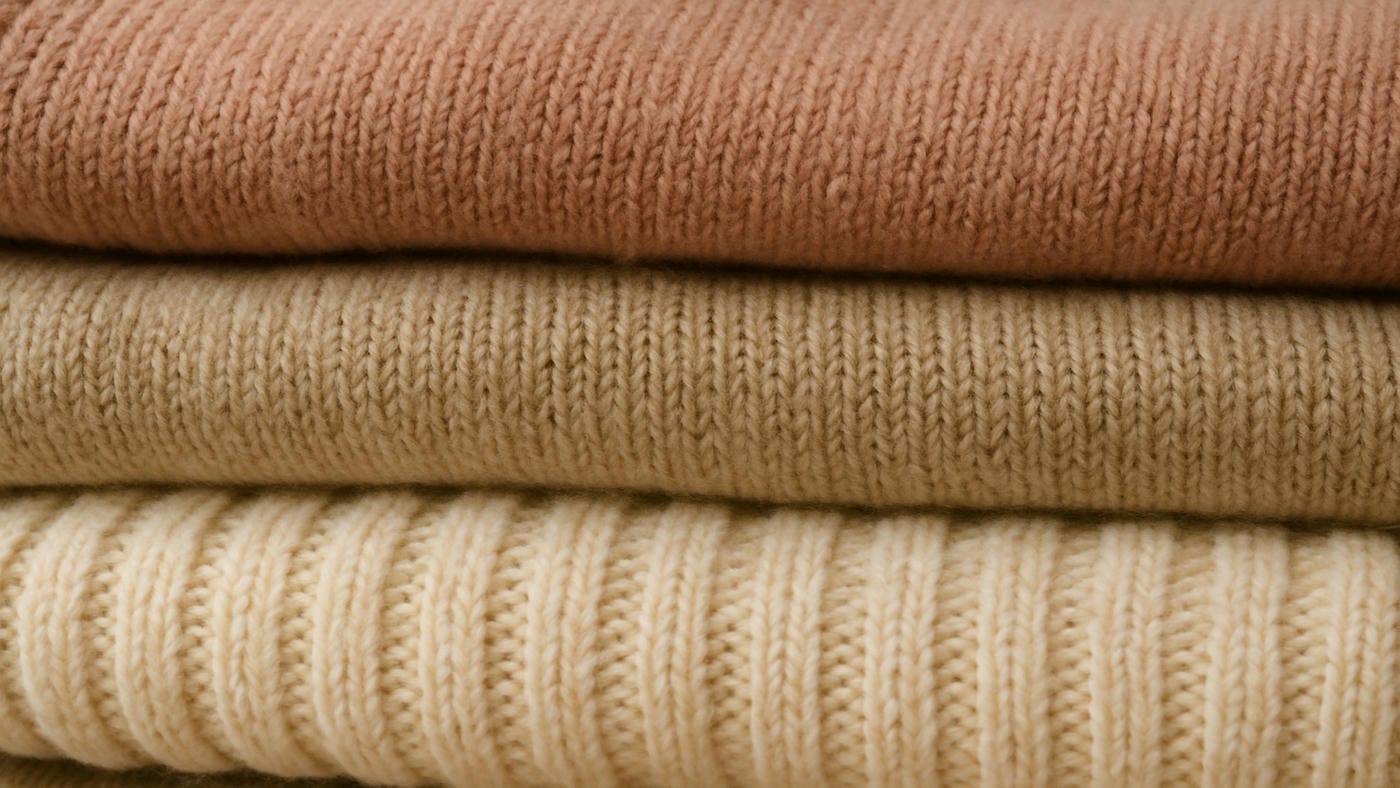Article: How to Care for Merino Wool: Washing, Drying, and Storage Tips

How to Care for Merino Wool: Washing, Drying, and Storage Tips
Merino wool is famous for its ultrafine fibers, luxurious drape, and year-round comfort—but even the world’s most advanced natural fabric needs thoughtful care. Follow these field-tested tips to help your Merino sweaters, cardigans, and base layers stay as heavenly as the day they left the loom.
Why Merino Deserves Special Attention
Merino fibers are only 15–19 microns in diameter—about one-third the width of a human hair. That softness is exactly why they’re prone to felting, heat shock, and pilling if treated like ordinary wool. A smart care routine preserves three key benefits:
-
Thermo-regulation: crimped fibers trap air for warmth yet breathe in heat.
-
Odor resistance: natural lanolin keeps bacteria at bay.
-
Shape retention: elasticity ensures it springs back after stretching.
Treat Merino right, and you’ll extend its life cycle, cut replacement costs, and reduce fashion waste.
Washing Basics
The golden rule: low temperature, low agitation, wool-safe detergent.
-
Turn garments inside-out. Protects the outer surface from friction.
-
Use a mesh laundry bag. Prevents snagging on zippers or buttons.
-
Choose cold water (< 30 °C / 86 °F). Sudden heat causes irreversible shrinkage.
-
Select the wool or delicates cycle. Short, gentle spins mimic handwashing motions.
-
Opt for enzyme-free detergent. Regular formulas break down the keratin that gives Merino strength; look for “wool wash” on the label.
-
Skip fabric softener and bleach. Softener coats fibers, trapping odors; bleach yellows and weakens the yarn.
Pro tip: If your machine has a soil level setting, keep it on “light” or “eco.” You’ll halve the agitation time without sacrificing cleanliness.
When Handwashing Is Better
Lace-stitch pullovers and ultralight base layers sometimes need the spa treatment.
-
Fill a basin with lukewarm water and two teaspoons of wool-safe detergent.
-
Immerse gently. Swish for two to three minutes; never twist or wring.
-
Rinse in water of equal temperature. A sudden cold rinse can shock fibers and cause felting.
-
Press—not wring—excess water between your palms or against the sink wall.
Treat stubborn stains before washing: dab (don’t rub) with diluted white vinegar or a drop of gentle shampoo, then rinse.
Drying Done Right
Heat is Merino’s enemy, so step away from the tumble dryer.
-
Roll in a towel. Lay the sweater flat on a clean towel, roll it up, and press lightly to blot moisture.
-
Reshape while damp. Smooth the neckline, cuffs, and hem to original dimensions.
-
Lay flat on a ventilated rack. Elevation allows air to circulate on both sides, speeding up drying without stretching.
-
Keep out of direct sun and away from radiators. UV can fade dyes; intense heat can make fibers brittle.
If you must hurry, use your dryer’s air-only (no-heat) setting for five minutes to kick-start the airflow, then finish flat.
Between-Wear Refresh
Merino’s antibacterial properties let you wear a piece 3–5 times before washing.
-
Steam to revive the drape. A handheld steamer relaxes wrinkles and kills odor-causing microbes.
-
Mist with fabric spray. Choose an alcohol-free, wool-safe refresher for post-commute pick-me-ups.
-
Spot clean. A damp cloth plus mild soap handles small spills without a full wash cycle.
Rotate garments so fibers can recover their loft and elasticity.
Tackling Pilling
Those tiny fuzz balls are normal where sleeves brush sides or bags.
-
Use a cashmere comb or battery shaver every few wears. Glide lightly; don’t press hard.
-
Wash inside-out to reduce friction in the drum.
-
Limit heavy layering. Denim jackets and coarse backpacks accelerate abrasion.
Consistent de-pilling keeps knits looking fresh and delays deeper wear.
Smart Storage
In-Season:
-
Fold—don’t hang—Merino; weight can stretch shoulders.
-
Stack in breathable cotton bins; add cedar chips or lavender sachets to deter moths.
Off-Season:
-
Wash before storing—pests love body oils.
-
Place in zippered cotton bags or perforated vacuum bags; avoid airtight plastic, which can trap moisture.
-
Include a desiccant pack if your space is humid.
Label bins by weight (light, medium, heavy) so you can grab the right layer as seasons change.
Wearing & Traveling Tips
-
Layer strategically. Merino excels as a base or mid-layer; let it sit closest to the skin for best moisture management.
-
Air out overnight. Hang your sweater in the bathroom while you shower—the gentle steam refreshes without a wash.
-
Choose a suitcase slot, not a hanger. Fold and slide into a breathable packing cube; arrive wrinkle-free.
-
Mind rough surfaces. Leaning on brick walls or Velcro straps can snag delicate stitches—cape your coat or tote over rough textures first.
Quick Troubleshooting
| Problem | What Happened | Fix |
|---|---|---|
| Sweater shrank | Hot wash or tumble dry | Soak in lukewarm water with hair conditioner for 15 min, gently stretch to shape, dry flat. |
| Persistent odor | Detergent buildup | Rinse in cold water with 1 Tbsp white vinegar, then air-dry. |
| Stiff feel | Hard-water residue | Add a teaspoon of glycerin or use a final rinse with distilled water. |
| Color looks dull | Detergent with optical brighteners | Wash inside-out with wool-safe detergent; future washes will restore depth. |
Final Word
Merino wool rewards mindful owners with years of feather-soft comfort, odor-free travel days, and effortless style. Stick to cool water, gentle cycles, flat drying, and breathable storage. With these simple habits, every Merino piece in your wardrobe—from ultralight tees to chunky fisherman knits—will keep delivering performance and luxury, season after season.




